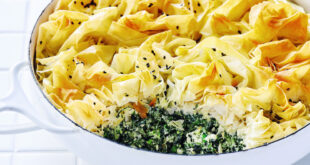 Green bananas, woody peaches, rock-hard kiwifruit and tasteless melons – no, you’re not the only one with these common complaints. For those of us who buy their fruit from the local supermarket, the sad reality is that produce is often unappealing, and sometimes downright inedible. And the reason is all to do with fresh-food transportation, shelf life, and a mysterious measurement tool called ‘Brix’.
Green bananas, woody peaches, rock-hard kiwifruit and tasteless melons – no, you’re not the only one with these common complaints. For those of us who buy their fruit from the local supermarket, the sad reality is that produce is often unappealing, and sometimes downright inedible. And the reason is all to do with fresh-food transportation, shelf life, and a mysterious measurement tool called ‘Brix’.
The thing is, although no shopper likes to come across bruised, brown, squishy fruit in the fresh produce section, no supermarket wants to be tossing produce into the bin a day after it’s just arrived on its shelves. It’s a dilemma that comes about because of the distance fresh produce must travel to reach its consumers. Fruit, especially ‘soft fruit’ such as berries, and stone fruit such as apricots, peaches, and nectarines, is very easily damaged during transportation. And even when it comes from New Zealand, it may still have to travel the length of the country to reach some outlets. To pick the fruit when it is at its tastiest is to harvest it at a stage when it has only a few days to go before it begins to turn ‘bad’. But to pick it so it will last the journey and stay on the shelves for several days before deteriorating, is to harvest it when its ‘Brix’ levels are too low.
‘Brix’, which is recorded in degrees, is a measurement of the amount of sugar in a liquid. Each 1 degree of Brix equals 1 gram of sucrose in 100 grams of solution. Brix degrees are measured with a tool called a refractometer. The refractometer requires just a few drops of juice from a fruit to test for sweetness.
By the time most fruit is ready to begin ripening, it has already reached its potential size (and sometimes its potential colour). If the Brix test is taken at this early stage, the result will be a low reading because although the fruit is full-sized, it will be green and sour. As the fruit starts the ripening process, the ratio of sugar to liquid in the fruit starts to increase. It’s only once the sugar content is at a satisfying level for consumers, that its ready to eat. Unfortunately, sugar concentration goes hand in hand with softening of the fruit, and soft fruit doesn’t travel well. That’s why the fruit sold in supermarkets is often picked while its Brix levels are still at an unsatisfactory level for consumption.
To add to the problem, some fruits are ‘climacteric’ and some are ‘non-climacteric’. Climacteric fruits (such as bananas and pears) continue to ripen after they have been picked. This means that although they may not ripen significantly on the cool supermarket fresh produce shelves, once you get them home and into the warmth of your kitchen, they will grow in sweetness. However, non-climacteric fruit (such as strawberries) will stay as they are in terms of sweetness, no matter how you treat them after purchase.
There is little we can do to persuade supermarkets to give us fruit that is at the height of sweetness, but we can educate ourselves on what produce will and won’t ripen after picking. And we can support outlets (such as farmers markets) that bring us closer to growers who pick when fruit is at its best because it will be sold quickly after its short trip to market.










Robert Efford - 4 years ago
The fruit sold in supermarkets does not have the nutritious value that is claimed for that fruit as it has not matured. Even stalls in farmers markets are selling immature produce. I know I was an orchardist and market grower and wouldn’t supply the local supermarket because they wouldn’t pay an economic price.